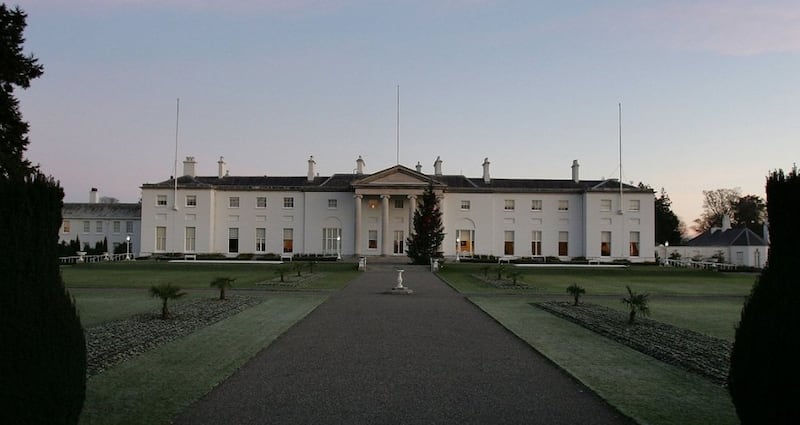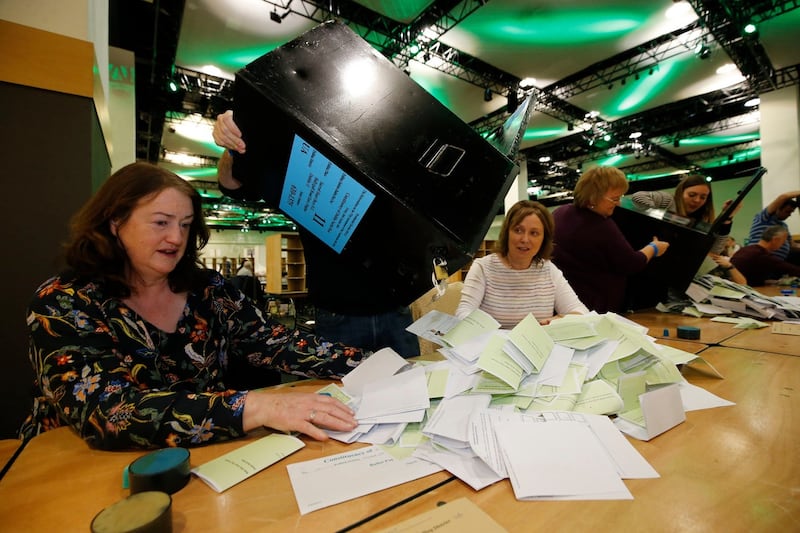President Michael D Higgins’s second term begins on November 11th, when he will be inaugurated at St Patrick’s Hall in Dublin Castle, swearing the oath of office to the Chief Justice in front of members of the Oireachtas, the judiciary, diplomatic corps and other distinguished guests.
His first act will be to deliver his inaugural address. Later that evening, Mr Higgins will return to Dublin Castle for a reception in his honour.
In the days afterwards, he is expected to name his new Council of State. Watch out for a Traveller, suggests one source, reflecting on the campaign when Traveller issues were weaponised by independent candidate Peter Casey. Or a person with disabilities, the source suggests.


Mr Higgins also pledged to bring more transparency to spending and funding at Áras an Uachtaráin during the campaign, in particular in relation to an annual €317,000 allowance to the president’s office and how that is spent.
During the campaign Mr Higgins pledged to publish the details of how the allowance has been spent, and sources say they expect him to do that in the coming weeks, perhaps even before the inauguration.
“He’s made a number of commitments during the campaign. He won’t be able to dodge them,” says one close observer.
Reconnect
Mr Higgins is likely to see the need to reconnect with the public as their president, rather than as a candidate, over the coming weeks. Despite its triumphant ending, the campaign has been bruising for him.
Although he has – as he repeatedly said during the campaign – been turning up for elections and debates since 1969, for the past seven years he has lived a different existence entirely.
“He goes into a room and everyone stands up and applauds. Then they listen to him for 40-50 minutes, an hour. Then they applaud him again. And afterwards everyone tells him what a great speech he has made,” says one source about the life Mr Higgins has led since becoming president.
Contrast that with the experience of the campaign: he went into a radio studio and everyone shouted at him for the first 20 minutes about extravagance at the Áras and Learjets and €3,000-a-night hotel suites.
“Nobody had spoken to him like that for seven years,” reflects one observer. People who know him say he was startled by the ferocity of it, and the campaign has been difficult for him. Mr Casey’s campaign videos, attacking Mr Higgins, were hurtful to him, says a person who knows him. He did not give a press conference at Dublin Castle after the declaration on Saturday night. Perhaps he has had enough of the media, for now.
Commemorations
Within months, Mr Higgins will be into one of the principal tasks of his second term: residing over the commemorations of the 1919-23 period that includes the centenaries of the first Dáil, the War of Independence, the foundation of the independent state and the Civil War.
The first Dáil met on January 21st, 1919, in the Mansion House in Dublin, declaring its independence from Britain, appealing for recognition from the nations of the world and setting out its Democratic Programme. On the same day, the first shots of the War of Independence were fired at Soloheadbeg, Co Tipperary where local IRA commanders Seán Treacy, Seán Hogan and Dan Breen led an attack on two RIC men guarding the transport of explosives. Both RIC men, James McDonnell and Patrick O’Connell, were killed in the exchanges of fire.
Mr Higgins was central to the commemorations of the 1916 Rising and will play a similar role during the ceremonies which mark the 100th anniversary of the often bloody events that led to the birth of independent Ireland.
“It’s tricky stuff,” says historian Diarmaid Ferriter, UCD history professor and a friend of Mr Higgins. He points to a speech given by the President at the Michael Collins commemoration at Béal na mBláth in 2016, at which he spoke of a “forgiving consciousness” and a need to remember all strands of the history of the period as a guide to how Mr Higgins will approach the coming events.
Mr Higgins will draw on his own family history: his father, an IRA veteran, and his uncles took different sides in the Civil War. In his study in Áras an Uachtaráin, there is a framed copy of his own poem Betrayal, a reflection on his father's experiences.
Brexit will inevitably loom over at least the early part of Mr Higgins’s second term. While the mechanics of dealing with Brexit are a matter for Government, the President is likely to pay attention to relations between people North and South, and between Ireland and the UK. Those who know Mr Higgins say he has become more comfortable dealing with the North during his first time, and expect that he will devote considerable time to it during his second term. During the campaign he described it as “Shared Ireland, Shared Island”, one of the initiatives of his second term.
Royal visits
The Ireland-UK relationship is also likely to be an important theme, especially at a time of frequent friction between the two governments. “I wouldn’t rule out a return visit by the Queen,” says one source. Both Prince Charles, now a frequent visitor, and Prince Harry made official trips to Ireland this year.
A visit that would be more problematic would be by US president Donald Trump. The White House sent signals last month that Mr Trump might visit Ireland in early November, though that plan was later cancelled. However, the US president has said he will visit, and the expectation in Government circles is that he will come at some stage before his re-election campaign in two years’ time. Some people around Government believe that a visit next spring may be on the cards.
Such a visit would pose particular challenges for Mr Higgins, a lifelong opponent of many of the policies followed and attitudes expressed by Mr Trump. The Government, at whose direction the President would act, will insist that the US president is afforded all the pomp and circumstance an official visit requires. If Mr Trump does come, Mr Higgins will be at the centre of a difficult balancing act.









